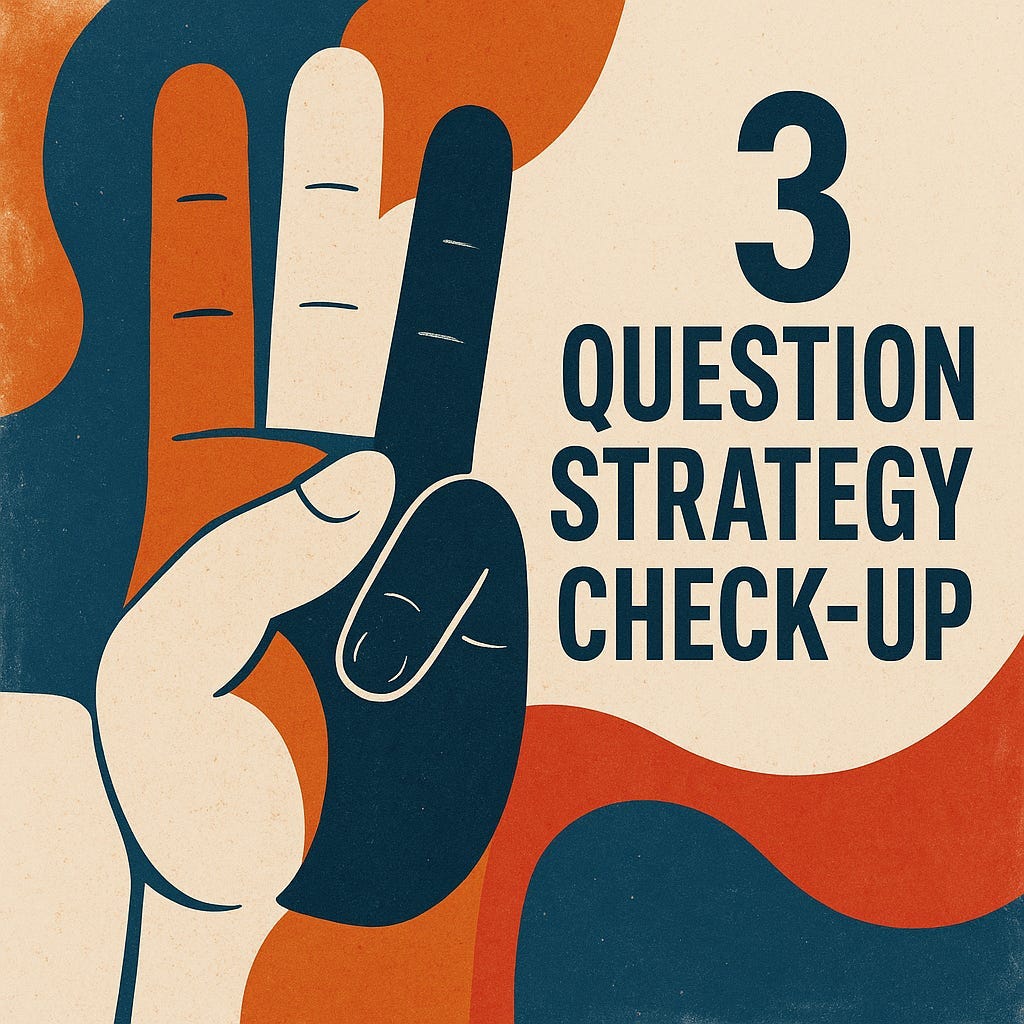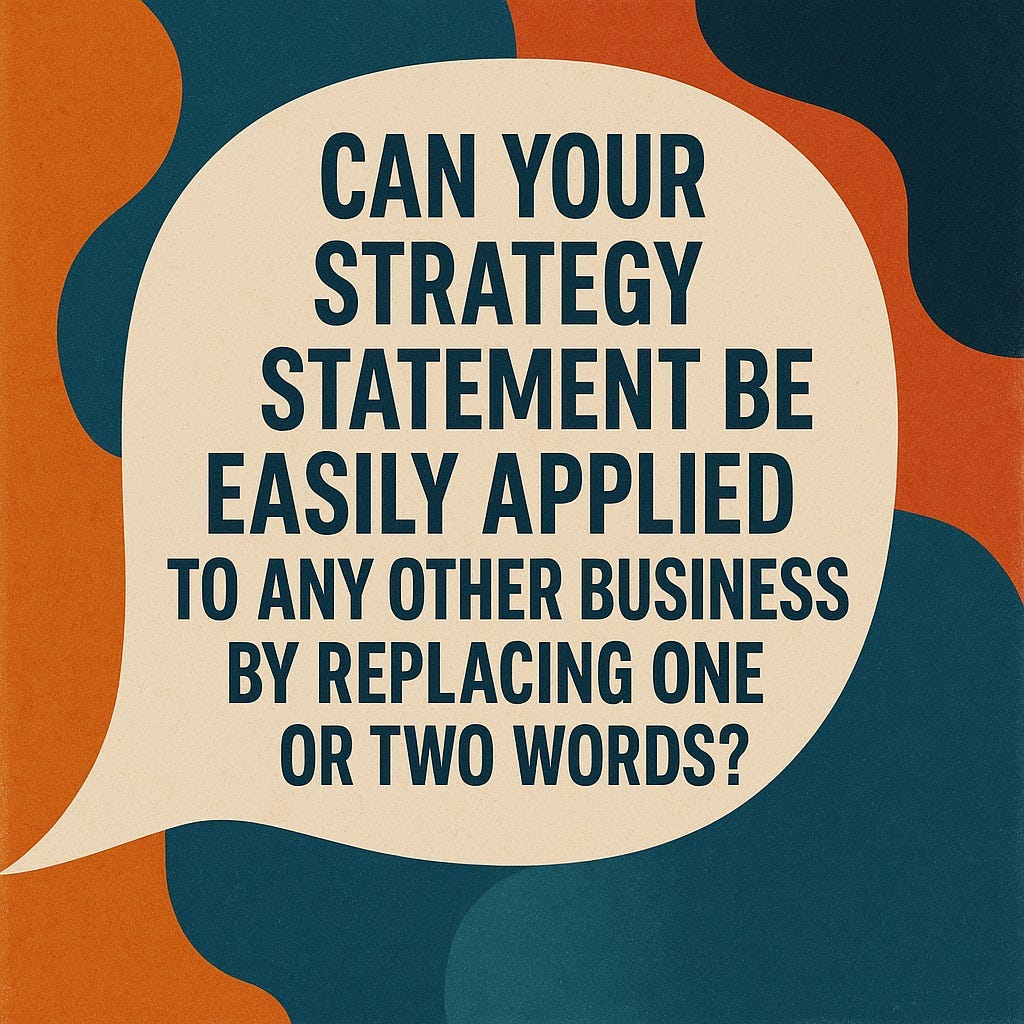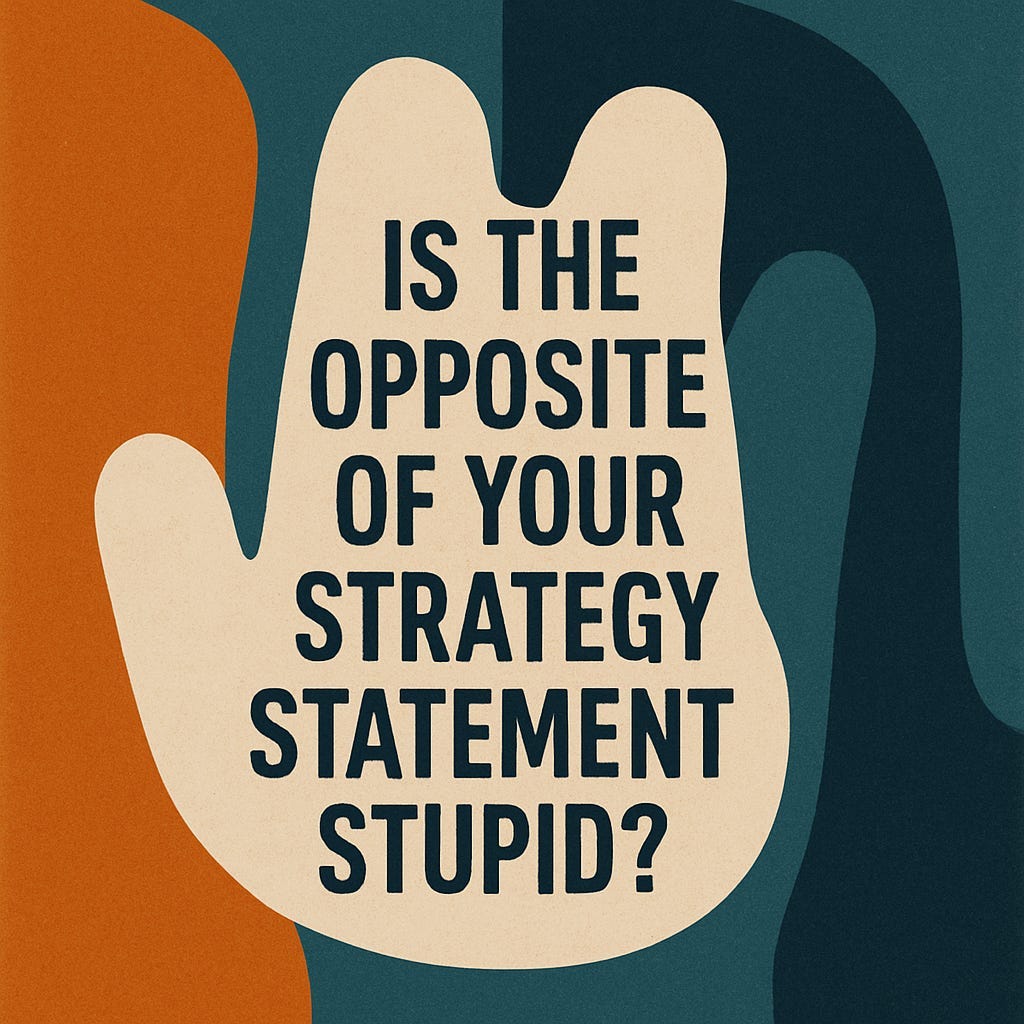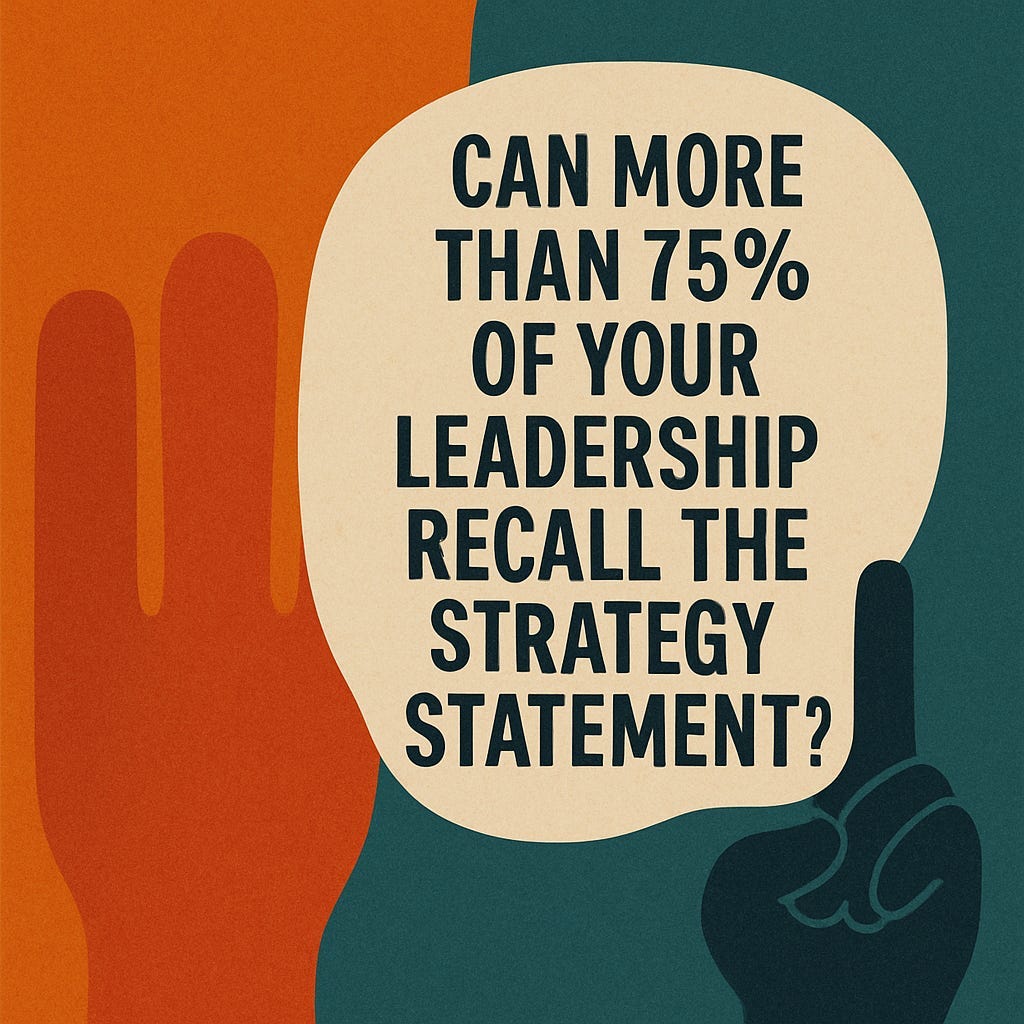3 Question Strategy Check-Up
You do not need a doctor's visit for this one!
I have often wondered how one can make a quick diagnosis of whether you have a strategy or not?
Though I have touched upon this in many of my notes and also in passing in some of my earlier posts, I thought it would be best if I wrote a dedicated post on this. So I decided to come up with a 3 question check up to figure out if you have a strategy or not.
Now this quick diagnosis is meant to understand if you “might” have a strategy. If the answer to any of the 3 questions is No, then for sure you do not have a Strategy. So the test is more specific than sensitive!
So let's get started
Question 1: Can your strategy statement be easily applied to any other business by replacing one or two words?
This question is to test the specificity of your strategy statement. The more specific it is, the better it helps in taking everyday decisions, which is the aim of a good strategy.
Let us dive into this with an example.
Example: We want to be the partner of choice by providing innovative and customer focussed paint solutions
Let us replace the word paint in the above statement and see a few examples below.
Altered text 1: We want to be the partner of choice by providing innovative and customer focussed car solutions.
Altered text 2: We want to be the partner of choice by providing innovative and customer focussed furniture solutions.
Altered text 3: We want to be the partner of choice by providing innovative and customer focussed gardening solutions.
Apart from so much else which is wrong with the above statements, the genericness (is that a word?) of such statements leads to lack of actionability. Like how is someone supposed to use this statement to inform what they should prioritize?
The more precise and specific a strategy statement is, the more it helps in
Clear definition of choices including what to do and not do
Everyday actionability
If the answer to this questions is No, move to question 2. If the answer is Yes, you can stop here already as you do not have a Strategy!
Question 2: Is the opposite of your strategy statement stupid?
Well I have taken this from the work of Roger Martin. Have a look at your strategy statement and now write the opposite of it. Let us take an example of a very widely found phrase in strategy statements.
Example: We want to be the best in class painting services provider.
Opposite: We want to be the worst in class painting services provider.
Well the opposite was quite stupid to be honest. Let us take another example.
Example: We want to have world class supply chain capabilities.
Opposite: We want to have third class supply chain capabilities.
Well the opposite of this is also quite stupid. So what does this mean?
Well, if the opposite of your statement is stupid, it is either just an ambition/goal or an operational initiative, both of which are important but are not strategy.
Let us take an example of a strategic statement.
Example: We want to serve customers looking to purchase paints for home decor, who order online with customized paint solutions.
Opposite: We want to serve customers looking to purchase paints for commercial purposes who shop in store with general paint solutions.
Well, well, well! The opposite of this strategic statement is not stupid. In fact it could be a perfectly good strategy as well to serve customers who are more likely to make their paint purchase in store.
This question therefore helps to diagnose if your statement has a strategic choice or is just a plain old goal or operational initiative.
Now if your answer to this is No, let us move to Question 3! If it is Yes, congratulations, you still do not have a Strategy.
Question 3: Can more than 75% of your leadership recall the strategy statement?
Strategy is useless if not communicated or percolated throughout the organization. If you recall I had shared a startling fact in Strategy learning 102 - Articles post.
only 28% of executives and middle managers responsible for executing strategy could list three of their company’s strategic priorities - MIT Sloan
Now this question might be more challenging to get an answer to but there are two ways to do it.
- A meeting on Strategy introduction (check out my previous post on this) where you can ask the participants to share with you in Direct Message (DM) what they think the company or business unit’s strategy is or
- Via a survey sent out to the leadership group via email to list out the strategy.
The third more painful way to do this is via personal interviews.
Now, if less than 75% of your leadership recall your strategy statement fully then I am afraid you do not “yet” have a strategy.
In case they can, Congratulations, you “might” have a strategy. As I said earlier, this is more of a specificity test than a sensitivity test. This means that if you fail this, you for sure do not have a strategy but if you pass this, you might have a good strategy.
There are various elements that make a good strategy. Do check out my earlier post on this topic.
Well that’s it for today. Hope you enjoyed reading this post. Do you have any suggestions or any topics that you would like us to write about? Do let us know in comments or messages. See you next week
- Strategy Shots








For the weirdest reason, I figured my answers might be biased so I took my strategy document and asked ChatGPT to assess it based on the 3 questions. 😁
This is just so cool, Shashank. I love the framework you've provided here. It's so simple but seems so powerful. I can already see how this could be so useful for brainstorming and diagnosing the positioning statements for businesses. And it could lead to propositions that are persuasive and memorable. I really enjoyed the graphics too!